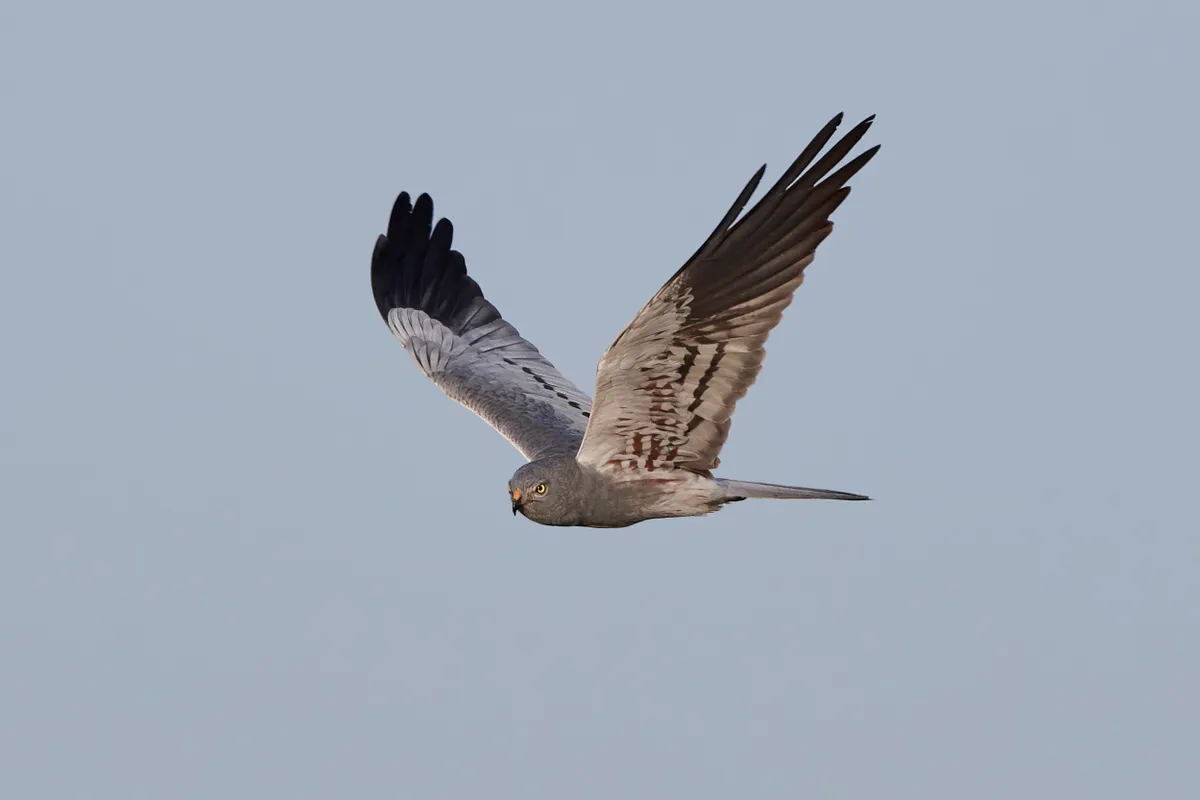There are three species of harrier in the UK, the largest of which is the marsh harrier. In 1971, this impressive raptor was Britain’s rarest breeding bird. Since then, numbers have steadily increased and today there are 590–695 breeding pairs in Britain.
Head to one of its stronghold and you may be lucky enough to spot its silhouette nicking the sky like a razor; a sharp-cut chevron on a backdrop of blue. Simple, subtle and with just a suggestion of menace.
Our guide looks at how to identify marsh harriers, what they eat, courtship and the best places to see them in the UK. We also look at the history of the marsh harrier, its current conservation status and migration patterns.
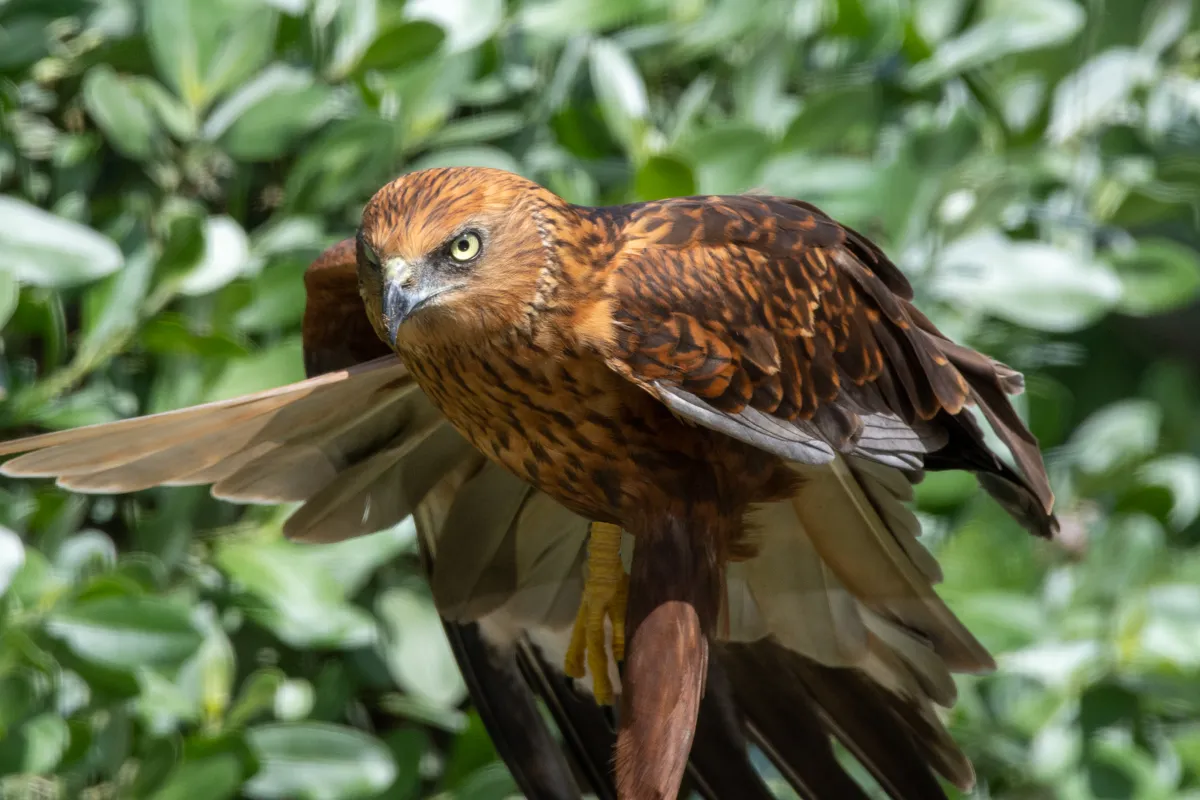
How to identify a marsh harrier
The marsh harrier is the largest harrier and has a heavier build and broader wings than other species. They are wetland specialists. Marsh harriers have a lazy flight – a few slow flaps followed by a long, wavering glide. Males are silver, black and rusty-red, while female harriers have dark brown bodes and are noticeably bigger. Marsh harriers have a wingspan of 122cm and weigh 540g (male)/670g (female).
History of the marsh harrier
Half a century ago, an opportunity to glimpse the marsh harrier’s spring courtship would have been an exceptional privilege. In 1971, the marsh harrier was Britain’s rarest breeding bird of prey: just one pair nested at Minsmere in Suffolk that year.
The species – along with other raptors, such as the peregrine falcon – had been all but wiped out by the widespread use of agricultural pesticides, including the now-infamous DDT, which built up in the birds’ bodies. Coming after a century and a half of extensive habitat destruction and relentless persecution, this was very nearly the final nail in the coffin.
To avoid extinction as a British breeding bird, the marsh harrier would have to bounce back from this perilous position.
Which, astonishingly, it did. A gradual withdrawal of insidious insecticides, stronger legal protection and the redevelopment of wetland habitats paved the way for a long-term revival.
You may also like:
How many marsh harriers are there in Britain?
The UK’s breeding population of marsh harriers has almost tripled over the last 25 years and is still on the up; the most recent estimate (published in the journal British Birds in February 2020) puts the figure at between 590 and 695 pairs.
Marsh harrier distribution
The majority of these, at around 70%, are in the east and south-east of England – it’s still the species’ stronghold. However, this bird has recently expanded its range, spreading north to counties such as Cumbria, Northumberland and Aberdeenshire and west to Somerset.
Marsh harriers were West Country birds long ago. Go back thousands of years and these graceful raptors would have populated the Somerset Levels, then a vast marshy sea. In fact, the UK’s only fossil records found for this species are from Iron Age lake settlements in the area. The marsh harriers later lost their marshland habitat as the land was drained, first for farming and, centuries later, by a rapidly expanding peat industry. The latter – which peaked in the 1960s as the demand for horticultural peat resulted in large-scale extraction – left huge, dark scars across the landscape.
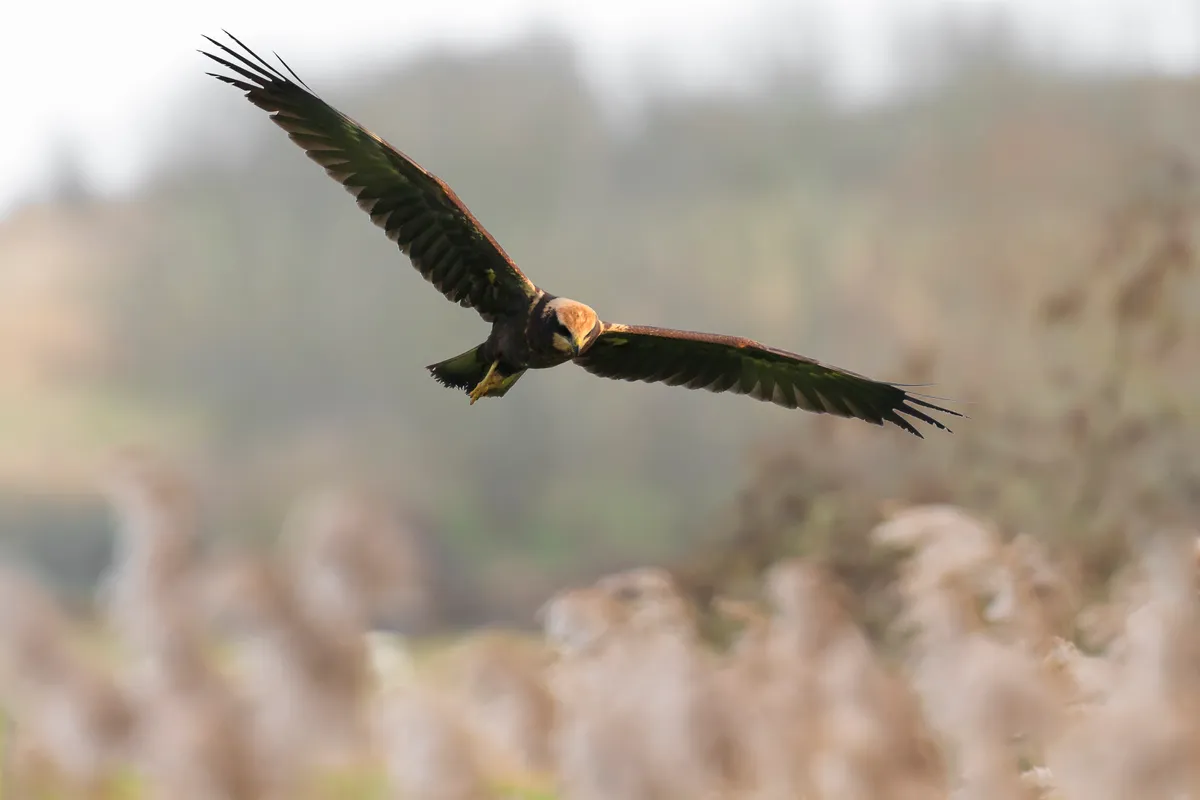
Marsh harrier courtship and breeding
Marsh harriers are well known for their impressive courtship displays. The male marsh harrier climbs high, turns and then tumbles downwards like a lovestruck lapwing. This dramatic display – evocatively known as ‘skydancing’ – is performed by other harriers and it’s a thrilling bit of theatre.
The climax of this courtship ritual is the famous mid-air food pass. The male bird often holds his position in the air with a kite-like tilt of the tail, his legs dangling. Squealing, the female flies beneath him and then, at the last moment, flips upside down with talons extended. The male
lets go of his parcel of prey for his prospective partner to take.
This breathtaking behaviour is not just for show. By provisioning his mate with prey,
the male harrier ensures that she’s in prime condition for egg-laying, which usually begins
in late April. And it doesn’t end there. Hidden away on her reed-bed nest, the female relies on food deliveries throughout incubation – which takes 31–38 days – and for the first two weeks after the four or five chicks have hatched. Add in the fact that the male might well be supplying food to another female, for marsh harriers are routinely bigamous, and he’s got his work cut out until well into the summer months.
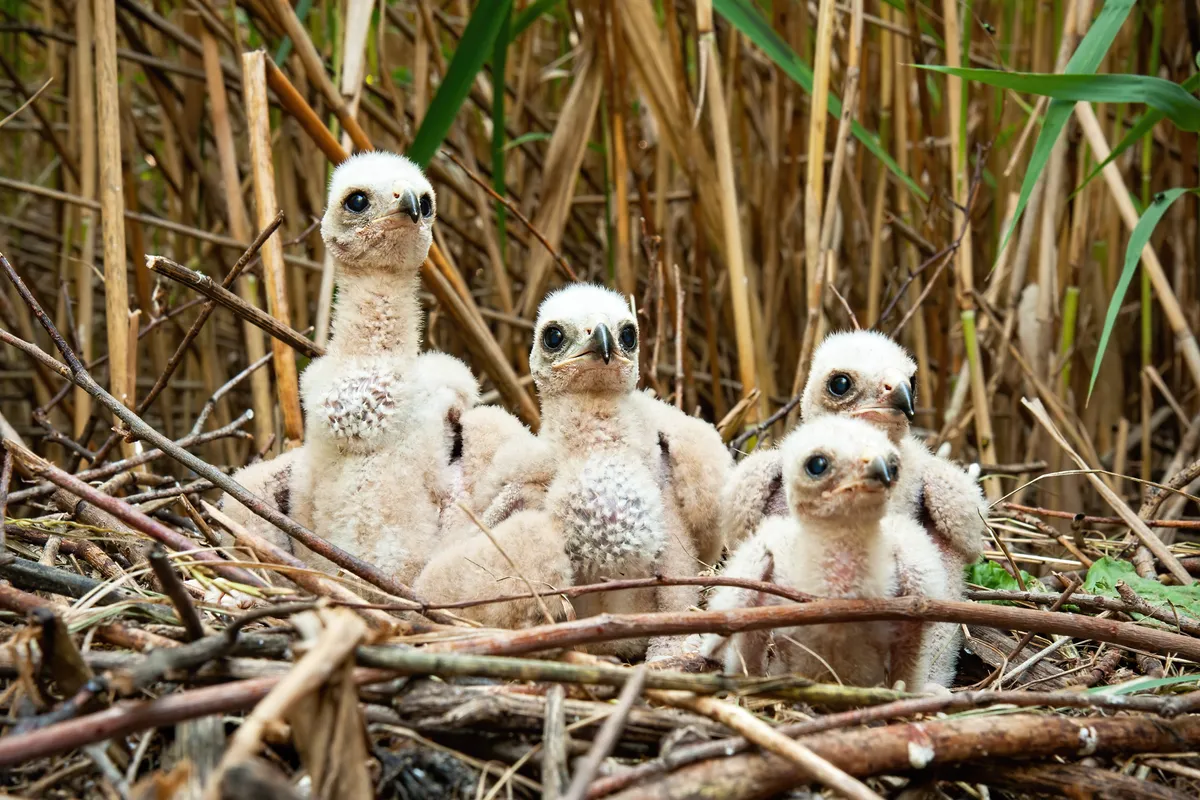
Marsh harrier hunting and diet
The items on a marsh harrier’s menu are many and varied. Everything from insects and amphibians to small mammals and the chicks of waterbirds are taken by the male. The female bird, being larger, can target more substantial meals – including moorhens, water rails and wading birds – to feed her growing brood.
The marsh harrier’s hunting maxim is ‘low and slow’. It quarters the ground like a barn owl, floating above the reeds on those long, V-shaped wings, looking and listening intently for movement below – their owl-like facial discs assist with this. Surprise is their key to success: they can turn on a sixpence and drop down on to their quarry in an instant.
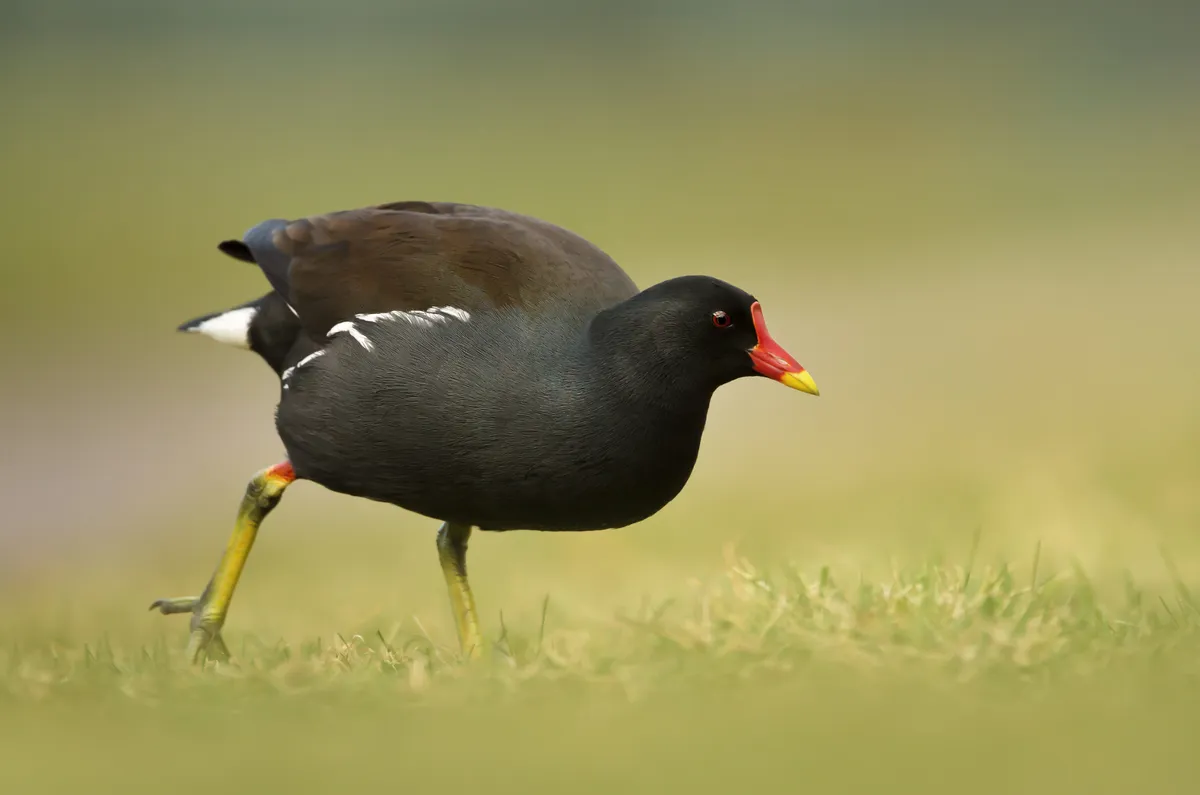
Do marsh harriers migrate?
Until recently, most marsh harriers migrated to north and west Africa at the end of the breeding season. Now, they’re overwintering in the UK in ever-increasing numbers. Visit the East Anglian fens to see tens of birds coming into their communal roosts. In Somerset, the Levels host up to 40 harriers in winter.
Where to see marsh harriers
Avalon Marshes, Somerset
The Avalon Marshes – an almost-contiguous collection of national nature reserves not far from Glastonbury – is a 1,500-hectare patchwork of open water, reed bed, wet meadow and ferny woodland. A diverse habitat such as this attracts a wealth of wildlife.
Marsh harriers have nested here regularly since 2009 (with a few sporadic successes prior to that). Today, they breed in good numbers; 2019 was their most successful season so far, with 20 or more young fledged from 17 nests. And they’re starting to expand.
Sightings at the main reserves (Shapwick Heath, Ham Wall and Westhay Moor) are virtually guaranteed.
Minsmere, Suffolk
Minsmere is the site of the last remaining breeding pair in 1971. Marsh harriers have bred here every year since.
Leighton Moss, Lancashire
Leighton Moss is the largest reed bed in North West England. Marsh harriers are seen all year round.
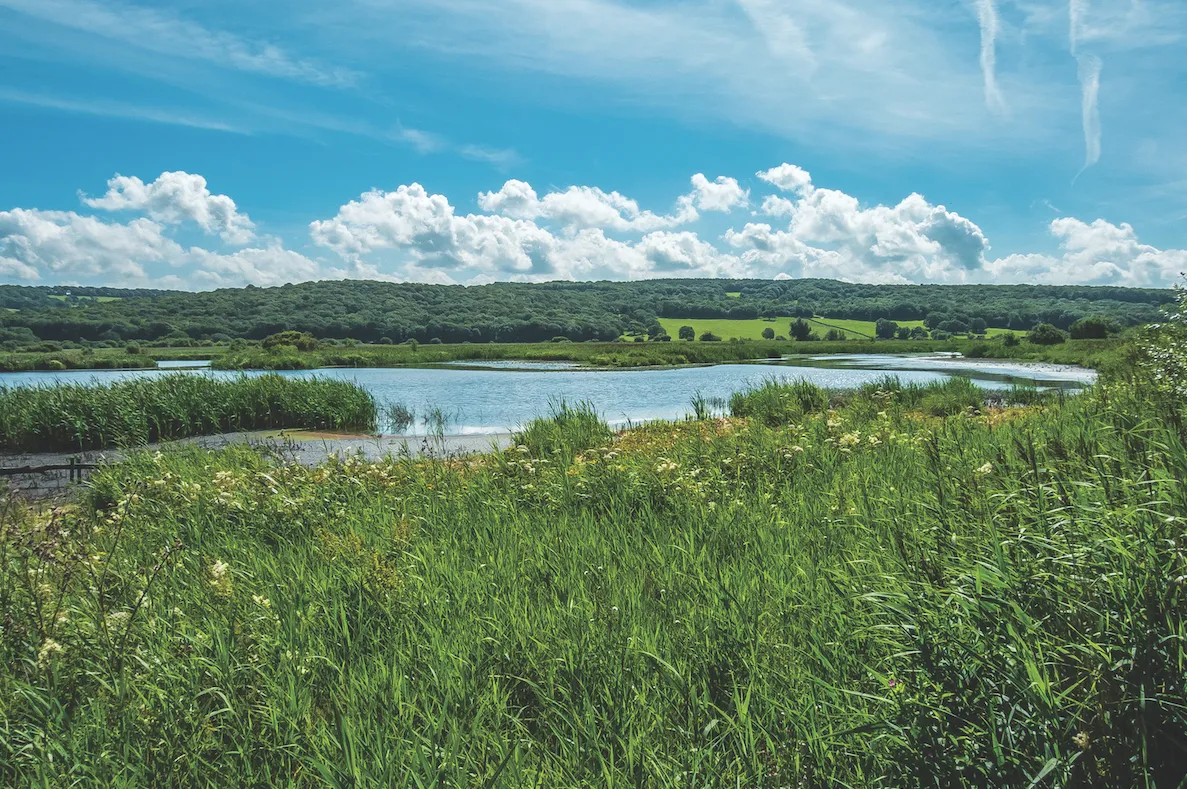
Wicken Fen, Cambridgeshire
2020 was the most successful breeding year for marsh harriers at Wicken Fen.
Blacktoft Sands, Yorkshire
Marsh harriers nest at Blacktoft Sands in summer and gather to roost (along with hen harriers) in winter.
Loch of Strathbeg, Aberdeenshire
Marsh harriers first bred at Loch of Strathbeg in 2017.
Cors Ddyga, Anglesey
Cors Ddyga wetland is one of the few places in Wales where you can see the marsh harrier.
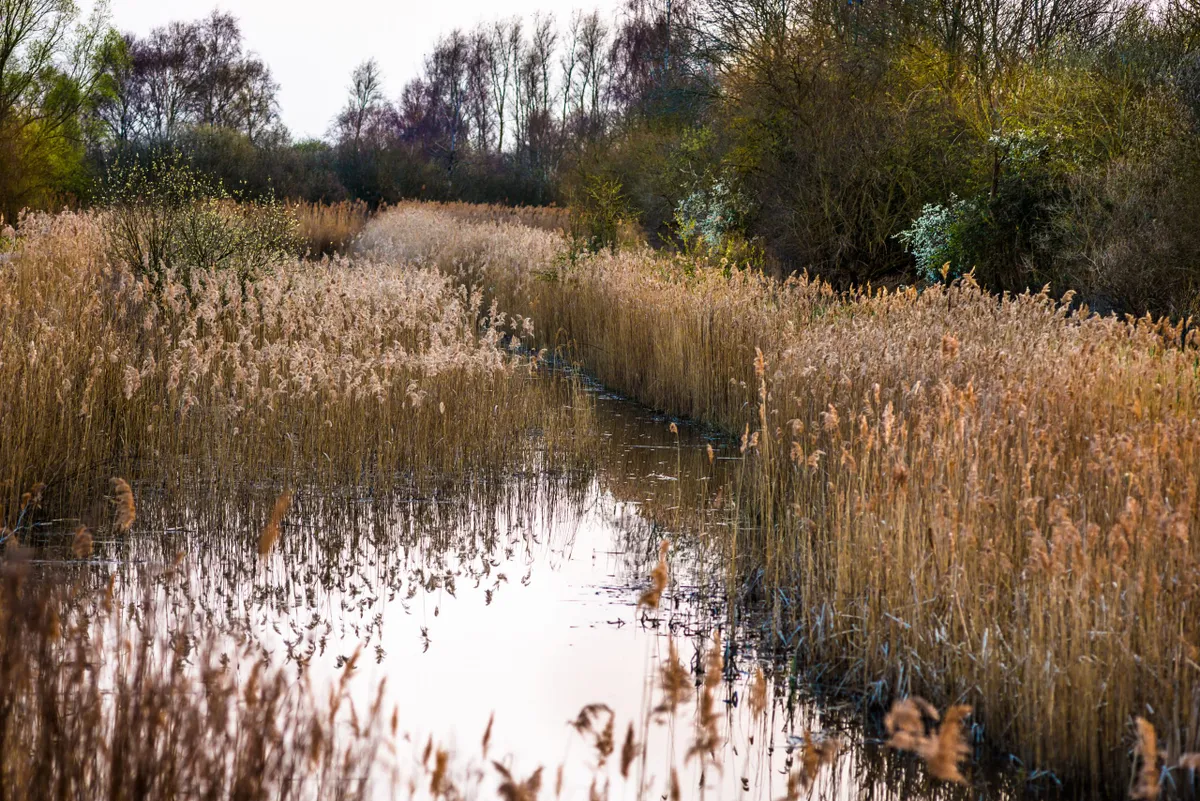
UK harrier species
Harriers are medium-sized raptors with long wings, tails and legs. They are named for their tireless pursuit of prey, hunting low over ground with wings held in a characteristic V-shape. Three species of harrier can be seen in the UK:
Marsh harrier Circus aeruginosus
The largest harrier has a heavier build and broader wings than other species. Wetland specialist.
• Wingspan: 122cm
• Weight: 540g (male)/670g (female)
• ID: Females are dark brown with pale heads. Males are tri-coloured – brown, grey and black.
• UK population: 590–695 breeding pairs.
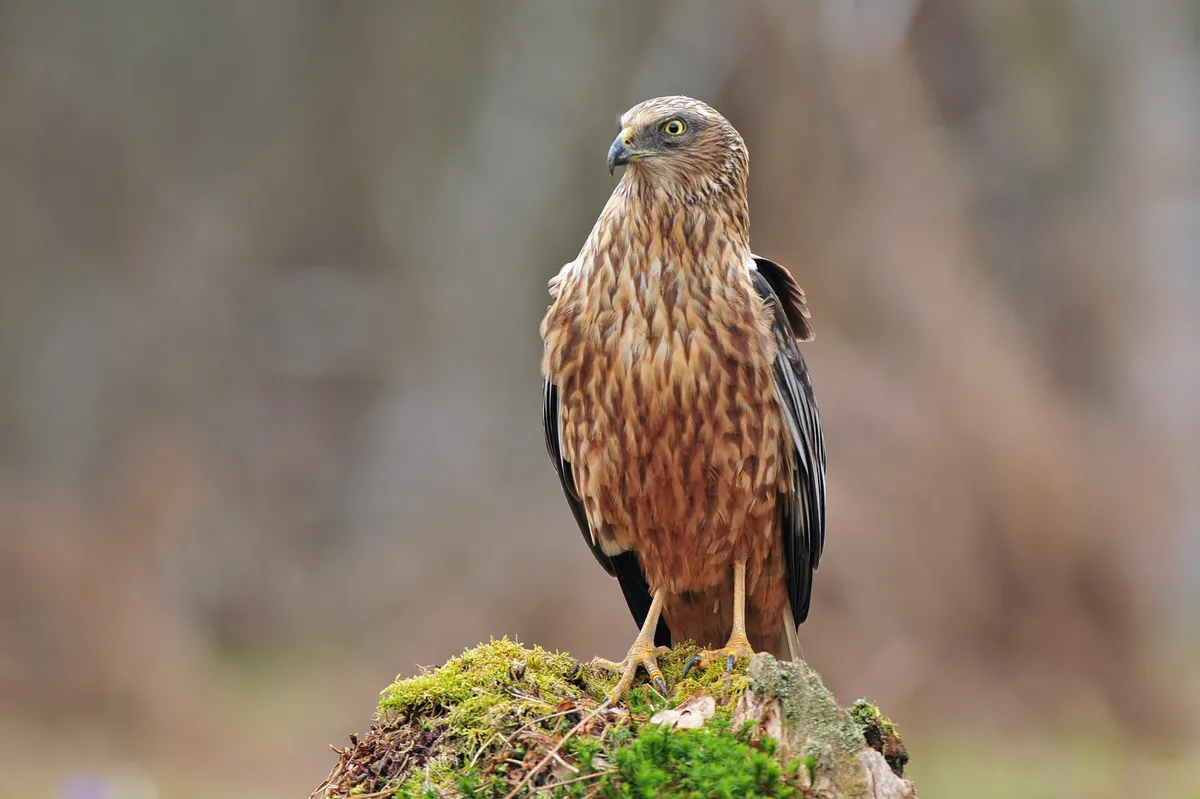
Hen harrier Circus cyaneus
This heavily persecuted and red-listed species breeds on upland moors; winters at lowland sites, including wetlands.
• Wingspan: 110cm
• Weight: 350g (male)/500g (female)
• ID: ‘Ghostly’ pale-grey males. Female birds are brown with barred tail. Both sexes have a distinctive white patch
on the rump.
• UK population: 500 breeding pairs.
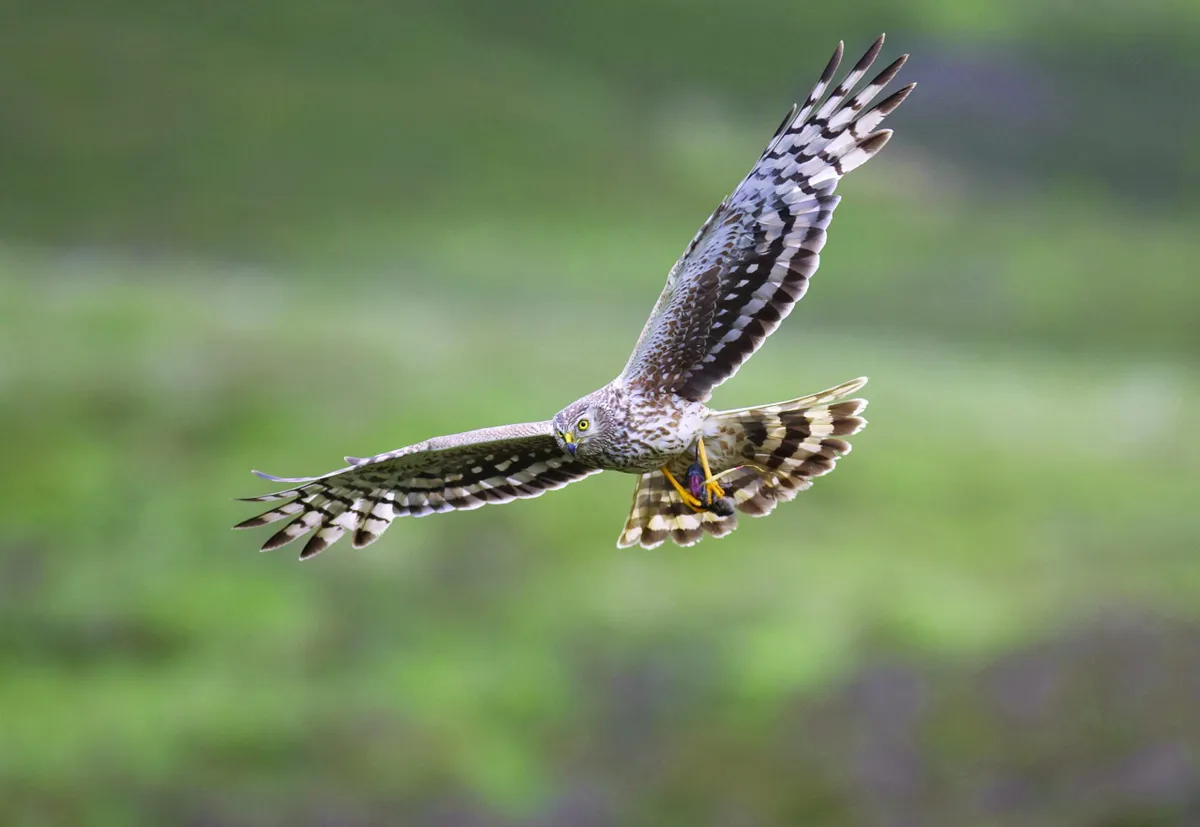
Montagu’s harrier Circus pygargus
Slimmer than other species, with narrow wings, this is a scarce summer visitor to the UK (it winters in Africa).
• Wingspan: 112cm
• Weight: 270g (male)/380g (female)
• ID: Males are mostly grey. Females
are dark brown.
• UK population: 5–10 breeding
pairs annually.
